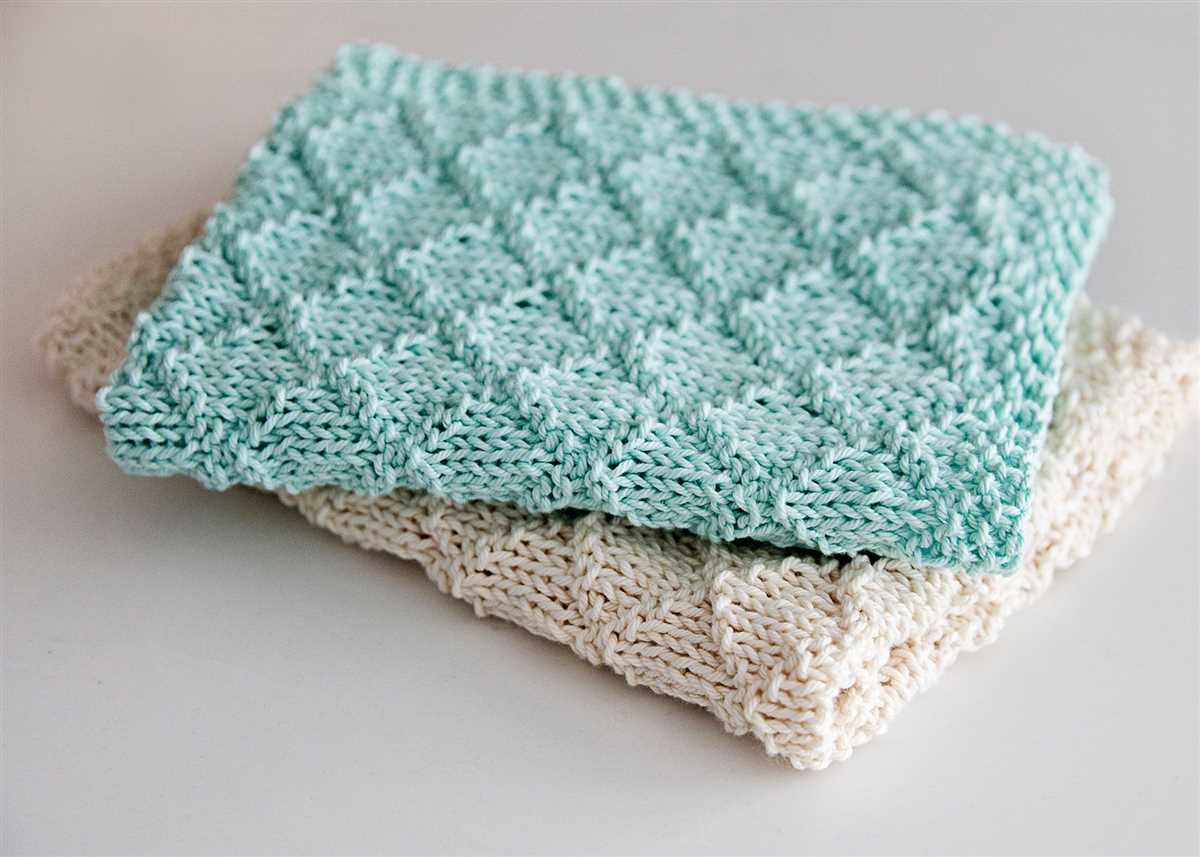
Knitting dishcloths are a great way to learn and practice new knitting stitches and patterns. They are quick, easy, and useful projects that can be completed in just a few hours. Dishcloths are also a practical item to have in the kitchen as they can be used for scrubbing dishes, wiping surfaces, and even as a hot pad.
One of the best things about knitting dishcloths is that there are so many free patterns available online. Whether you prefer simple garter stitch designs or more intricate lace patterns, there is a dishcloth pattern out there that will suit your skill level and personal style.
Knitting dishcloths is also a popular choice for beginners as they require only basic knitting skills. The patterns usually use simple stitches like knit and purl, making them perfect for learning and practicing the basics of knitting. Plus, dishcloths are small projects that can be completed relatively quickly, giving beginners a sense of accomplishment and motivation to continue on their knitting journey.
In this article, we will explore a variety of knitting dishcloths free patterns. From classic designs to modern patterns, there is something for everyone to enjoy. So grab your needles and let’s get started on creating some beautiful and functional dishcloths!
What are dishcloths?
Dishcloths, also known as kitchen washcloths or kitchen dish towels, are absorbent and versatile cleaning tools used in the kitchen. They are typically made from cotton or a cotton blend material and come in various shapes and sizes. Dishcloths are commonly used for wiping down surfaces, drying dishes, and cleaning utensils. They can also be used for scrubbing stubborn stains and spills.
These multi-purpose cloths are an essential part of any kitchen cleaning routine. They are designed to be durable and long-lasting, withstanding frequent use and multiple washes. Dishcloths are known for their absorbency, allowing them to efficiently soak up liquid and dry surfaces effectively.
Key features of dishcloths:
- Absorbency: Dishcloths are designed to absorb liquids, making them ideal for drying dishes and wiping down surfaces.
- Scrubbability: Some dishcloths have a textured surface or are made with materials that are effective at scrubbing away tough stains and grime.
- Durability: Dishcloths are made to withstand frequent use and washing without losing their effectiveness or deteriorating in quality.
- Versatility: Dishcloths can be used for a variety of cleaning tasks in the kitchen, from wiping down counters to cleaning utensils and appliances.
- Size and shape: Dishcloths come in different sizes and shapes to accommodate various cleaning needs. Some are square or rectangular, while others may have specific designs for easier grip or reach.
Overall, dishcloths are an essential tool in maintaining a clean and hygienic kitchen. They are practical, functional, and can add a touch of style with their patterns and designs. Whether you prefer to knit your own dishcloths using free patterns or purchase them, these versatile cleaning tools are a must-have for any kitchen.
Benefits of knitting dishcloths
Knitting dishcloths can be a fun and rewarding hobby that provides numerous benefits. Whether you are an experienced knitter or just starting out, knitting dishcloths offers a variety of advantages that make it a worthwhile activity.
1. Practicality: One of the main benefits of knitting dishcloths is their practicality. These cloths are used in everyday household tasks, such as washing dishes and cleaning countertops. By knitting your own dishcloths, you can create a practical item that is both useful and durable.
2. Customization: Knitting dishcloths allows you to customize your creations according to your personal preferences. You can choose from a wide range of colors, patterns, and textures to match your kitchen decor or personal style. This level of customization adds a personal touch to your dishcloths and makes them unique.
3. Eco-friendly: Knitting dishcloths is an eco-friendly alternative to disposable cleaning products. By using reusable dishcloths, you can reduce waste and contribute to a more sustainable lifestyle. Additionally, knitting your own dishcloths allows you to control the materials used, ensuring that they are made from natural fibers and free from harmful chemicals.
4. Stress relief: Knitting has been shown to have numerous therapeutic benefits, including stress relief. The repetitive and rhythmic motions of knitting can help calm the mind and promote relaxation. Knitting dishcloths provides an opportunity to engage in a soothing activity while creating something useful at the same time.
5. Portability: Knitting dishcloths is a portable hobby that can be done anywhere, making it ideal for those who are always on the go. With just a pair of knitting needles and a small ball of yarn, you can easily carry your project with you and work on it during your commute, while waiting in line, or even during travel.
In conclusion, knitting dishcloths offers a range of benefits, from practicality and customization to eco-friendliness and stress relief. It is a versatile and enjoyable hobby that allows you to create useful items while also providing a creative outlet. So why not give it a try and start knitting your own dishcloths today?
Choosing the right yarn for dishcloths
When it comes to knitting dishcloths, choosing the right yarn is essential. Dishcloths are used for cleaning and wiping various surfaces, so it is important to select a yarn that is durable, absorbent, and easy to care for. Here are some factors to consider when choosing yarn for dishcloths:
- Fiber content: The fiber content of the yarn will determine its absorbency and durability. Cotton yarn is a popular choice for dishcloths as it is highly absorbent and can withstand frequent use and washing. It is also soft on the hands and gentle on surfaces. Some cotton yarns are blended with other fibers such as bamboo or linen to enhance their properties. Additionally, acrylic yarns can also be used for dishcloths as they are durable and easy to care for.
- Texture: The texture of the yarn can affect the functionality of the dishcloth. A smooth yarn with little texture is ideal for scrubbing and cleaning surfaces effectively. However, if you prefer a more textured cloth for gentle exfoliation, you can choose a yarn with a slight nubby or bumpy texture.
- Weight: The weight of the yarn refers to its thickness. For dishcloths, a medium weight yarn, also known as worsted weight, is often used. It provides a good balance between absorbency and durability. However, you can also experiment with lighter or heavier yarn weights depending on your preferences.
- Color: While color may not affect the functionality of the dishcloth, it can certainly add a touch of style to your kitchen. You can choose yarns in a variety of colors to match your kitchen decor or opt for vibrant shades to make your dishcloths more fun and cheerful.
- Care instructions: Consider the care instructions for the yarn before making your final decision. Dishcloths are often subjected to frequent washing, so it is important to choose a yarn that can withstand machine washing and drying without losing its shape or color. Some yarns may require special care, such as hand washing or air drying.
By considering these factors, you can choose the perfect yarn for your dishcloths that combines functionality, durability, and aesthetic appeal.
Best yarn types for dishcloths
If you are looking to knit dishcloths, choosing the right type of yarn is essential. The yarn you select will determine the durability, absorbency, and overall feel of your dishcloths. Here are some of the best yarn types for knitting dishcloths:
1. Cotton yarn
Cotton yarn is a popular choice for dishcloths due to its absorbency and durability. It can easily absorb water and is great for scrubbing dishes and countertops. Look for cotton yarn that is labeled as “dishcloth cotton” or “kitchen cotton” as these are specifically designed for this purpose. These yarns usually have a tight twist, which helps prevent stretching and pilling.
2. Bamboo yarn
Bamboo yarn is another great option for dishcloths. It has natural antibacterial properties, making it ideal for cleaning and wiping surfaces. Bamboo yarn is also known for its softness and drape, giving your dishcloths a luxurious feel. It is eco-friendly and sustainable as well.
3. Linen yarn
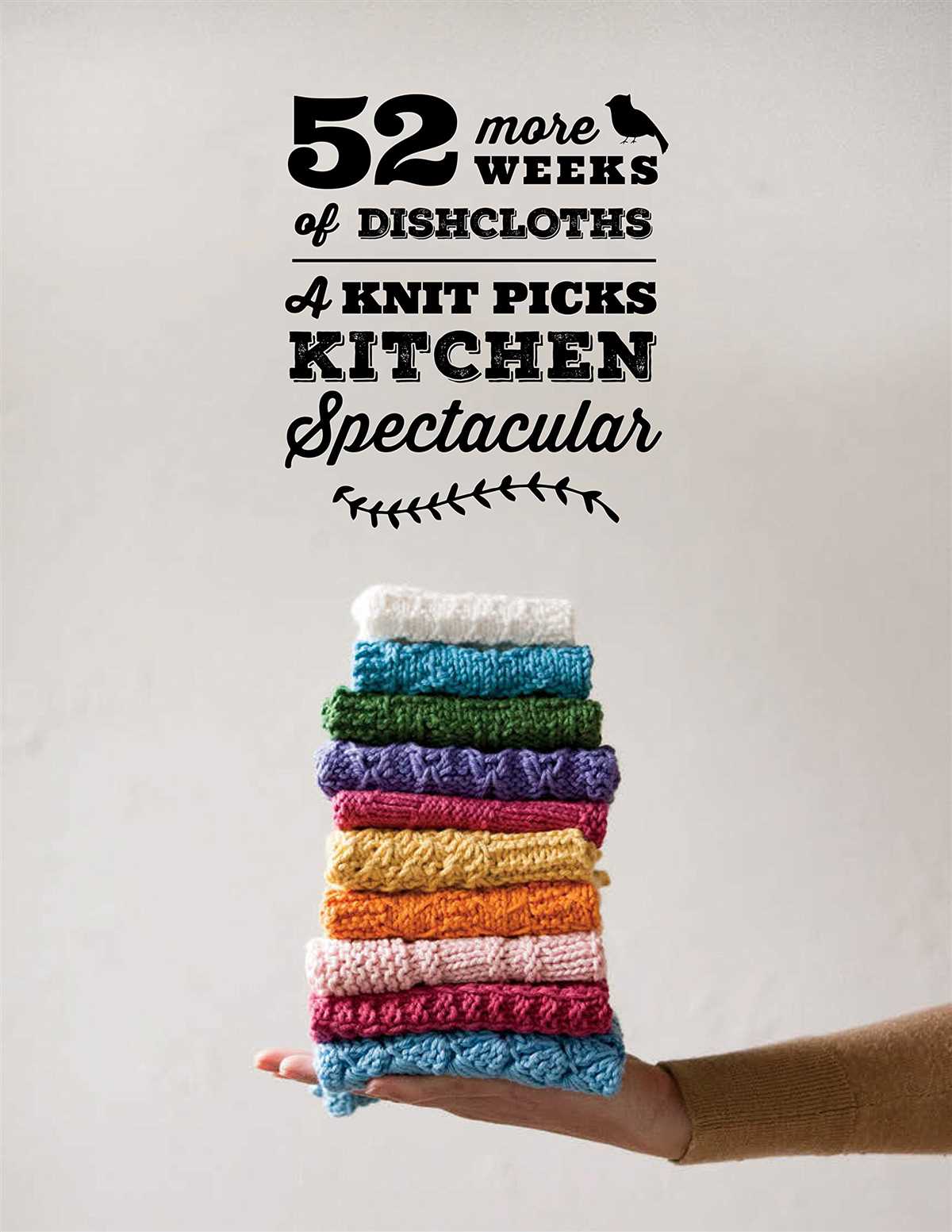
Linen yarn is lightweight and highly absorbent, making it perfect for dishcloths. It has a crisp texture and gets even softer with each wash. Linen yarn is also durable and long-lasting, ensuring that your dishcloths will withstand frequent use and washing.
4. Hemp yarn
Hemp yarn is a strong and durable option for dishcloths. It is naturally antimicrobial and resistant to mold and mildew, making it hygienic for kitchen use. Hemp yarn is also eco-friendly and sustainable, as hemp plants require less water and pesticides to grow compared to other crops.
When choosing the yarn for knitting dishcloths, it is important to consider both the functionality and aesthetic appeal. Experiment with different yarn types to find the one that suits your preference and provides the best results for your dishcloths.
Factors to consider when selecting yarn
When choosing yarn for knitting dishcloths, there are several important factors to consider. The type of yarn you select will greatly affect the texture, durability, and absorbency of your dishcloths. Here are some key factors to keep in mind:
Fiber Content
The fiber content of the yarn is crucial in determining the qualities of the dishcloth. For dishcloths, it is best to choose a yarn that is absorbent and easy to clean. Natural fibers such as cotton or linen are excellent choices as they are highly absorbent and can withstand frequent use and washing. Synthetic fibers like acrylic or nylon may not be as absorbent, but they are often more durable and can withstand rough use.
Weight and Gauge
The weight of the yarn and the recommended gauge for knitting will determine the size and density of your dishcloth. Dishcloths are typically knit using a medium-weight or worsted-weight yarn, but you can also use lighter or heavier weights depending on your preference. Be sure to check the recommended gauge on the yarn label or pattern to ensure that your dishcloth will turn out the desired size and thickness.
Color and Design
The color and design of the yarn can also play a role in your selection. For dishcloths, it is best to choose yarn in light or neutral colors. This will make it easier to see any stains or dirt on the cloth and ensure that it is thoroughly clean. Additionally, consider choosing yarn with a simple design or texture that will not interfere with the functionality of the dishcloth.
Care Instructions
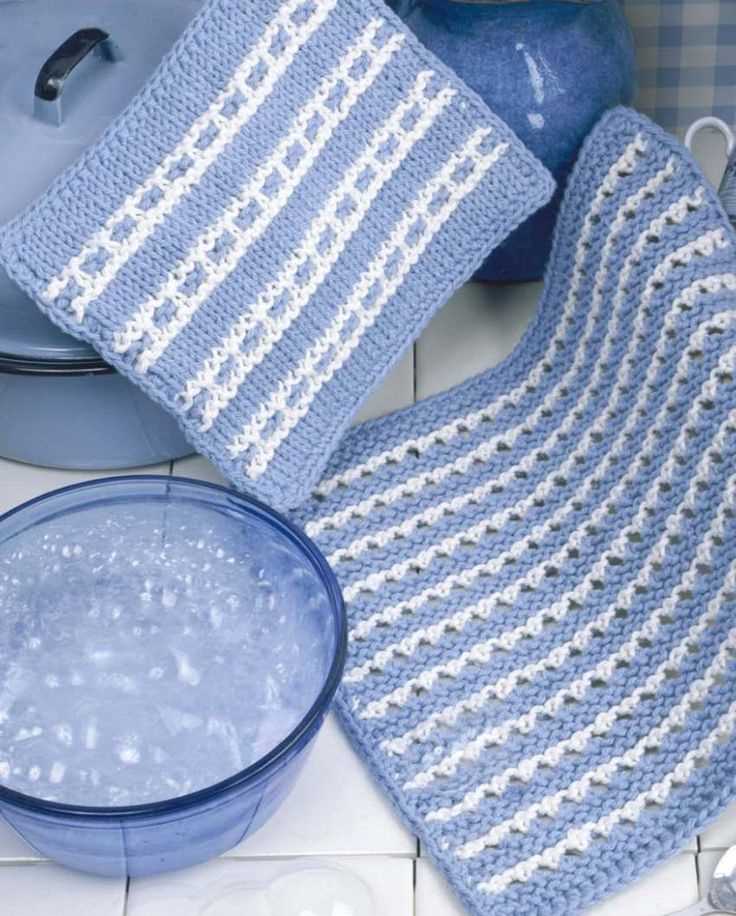
Before making a final decision, always check the care instructions for the yarn. Dishcloths often require frequent washing and may need special care. Make sure the yarn is machine washable and can withstand high temperatures if necessary. Choosing a yarn that is easy to care for will ensure that your dishcloths remain clean and in good condition for a long time.
Basic knitting techniques for dishcloths
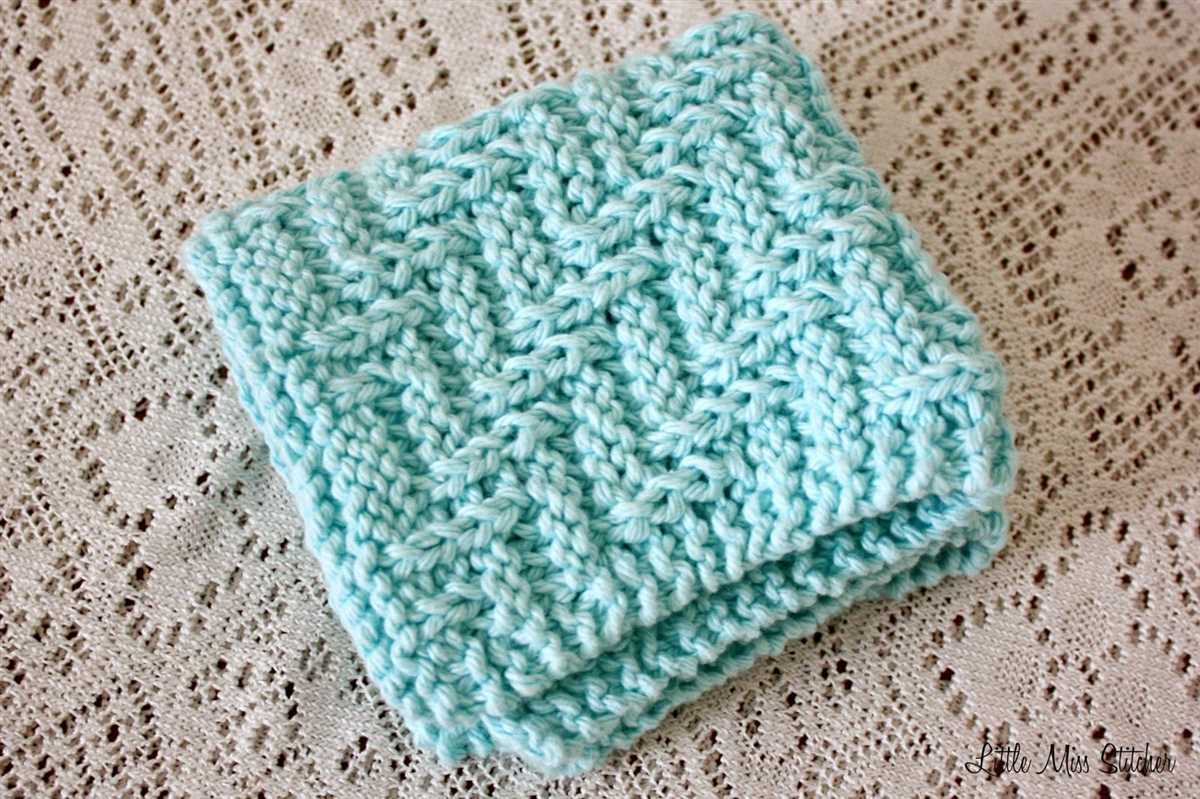
Knitting dishcloths can be a fun and rewarding project for both beginners and experienced knitters. With just a few basic knitting techniques, you can create beautiful and functional dishcloths for your kitchen. Here are some essential techniques to get you started:
1. Casting on
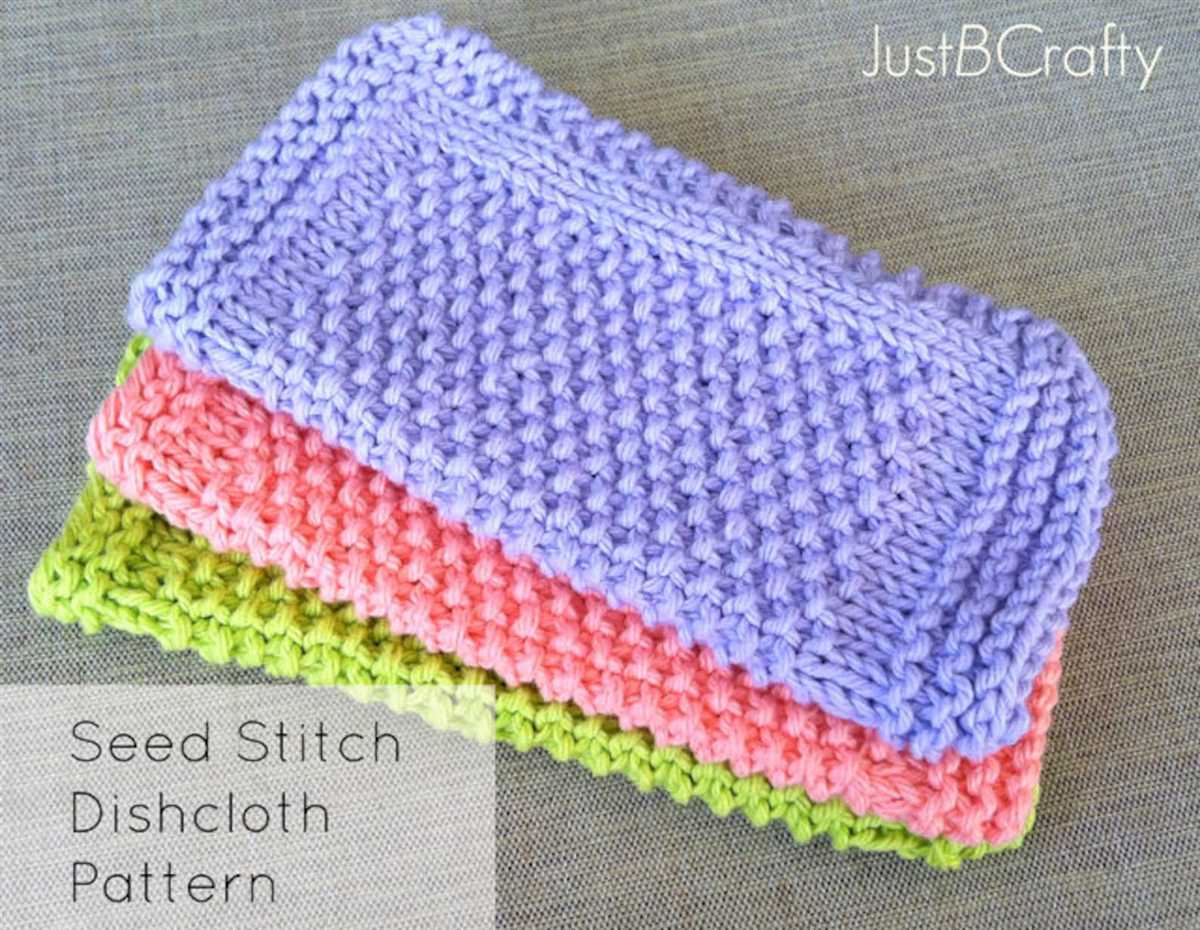
The first step in knitting a dishcloth is to cast on stitches onto your knitting needles. The most common method for casting on is the long-tail cast-on method. This method produces a neat and flexible edge, perfect for dishcloths.
2. Knit stitch
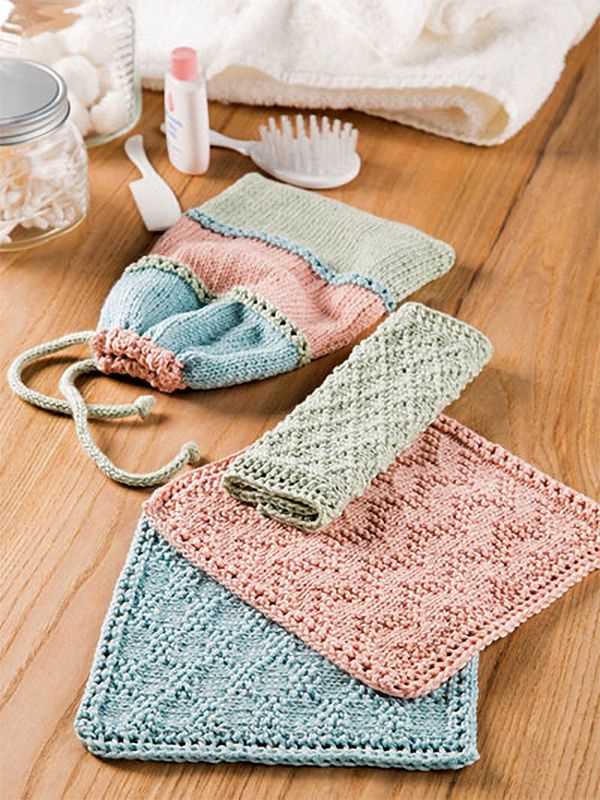
The knit stitch is the most fundamental stitch in knitting. To create the knit stitch, insert the right needle into the first stitch on the left needle, wrap the yarn around the right needle, and pull it through the stitch, sliding it off the left needle. Repeat this process for each stitch on the left needle.
3. Purl stitch
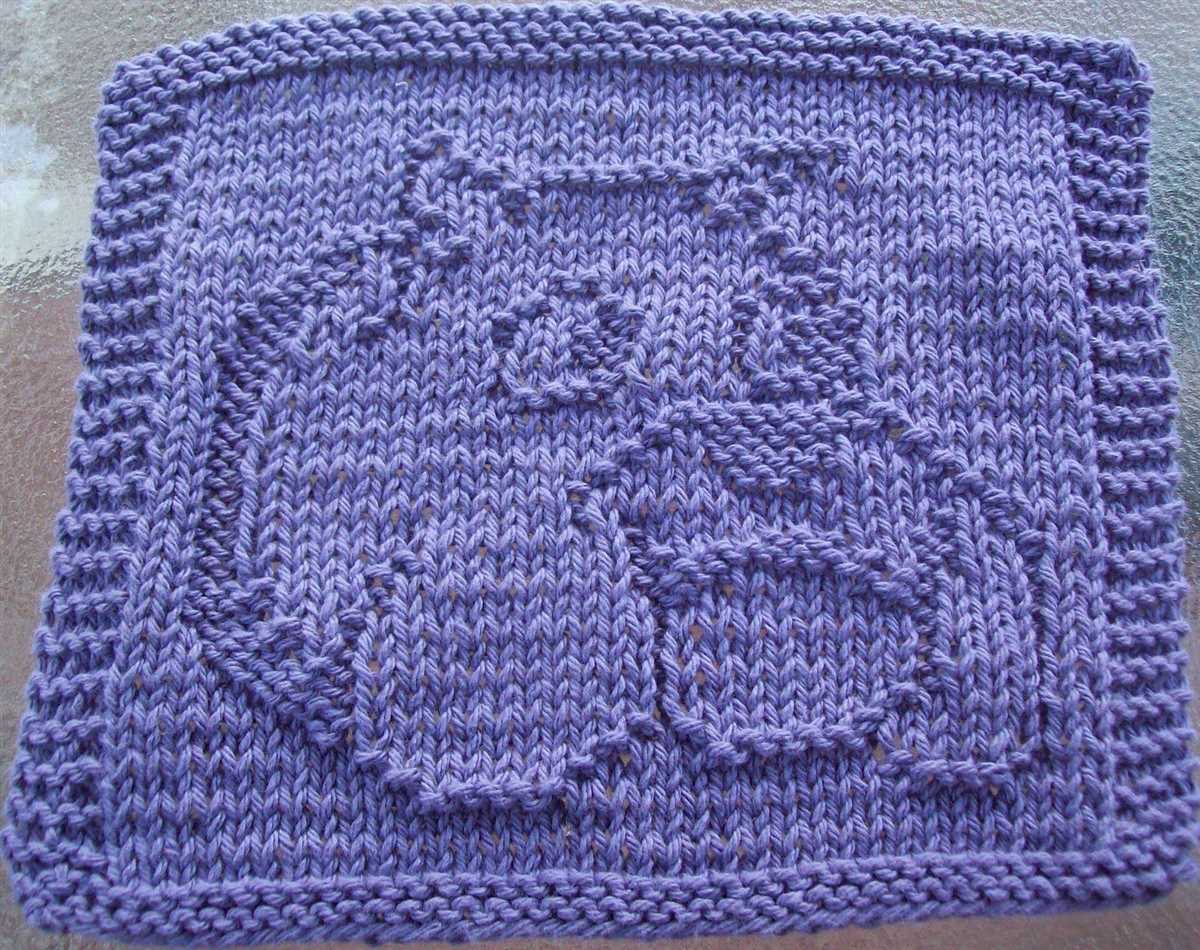
The purl stitch is the opposite of the knit stitch and creates a bumpy texture on the fabric. To purl a stitch, insert the right needle from right to left into the front of the stitch on the left needle, wrap the yarn around the right needle, and pull it through the stitch, sliding it off the left needle. Repeat this process for each stitch on the left needle.
4. Binding off
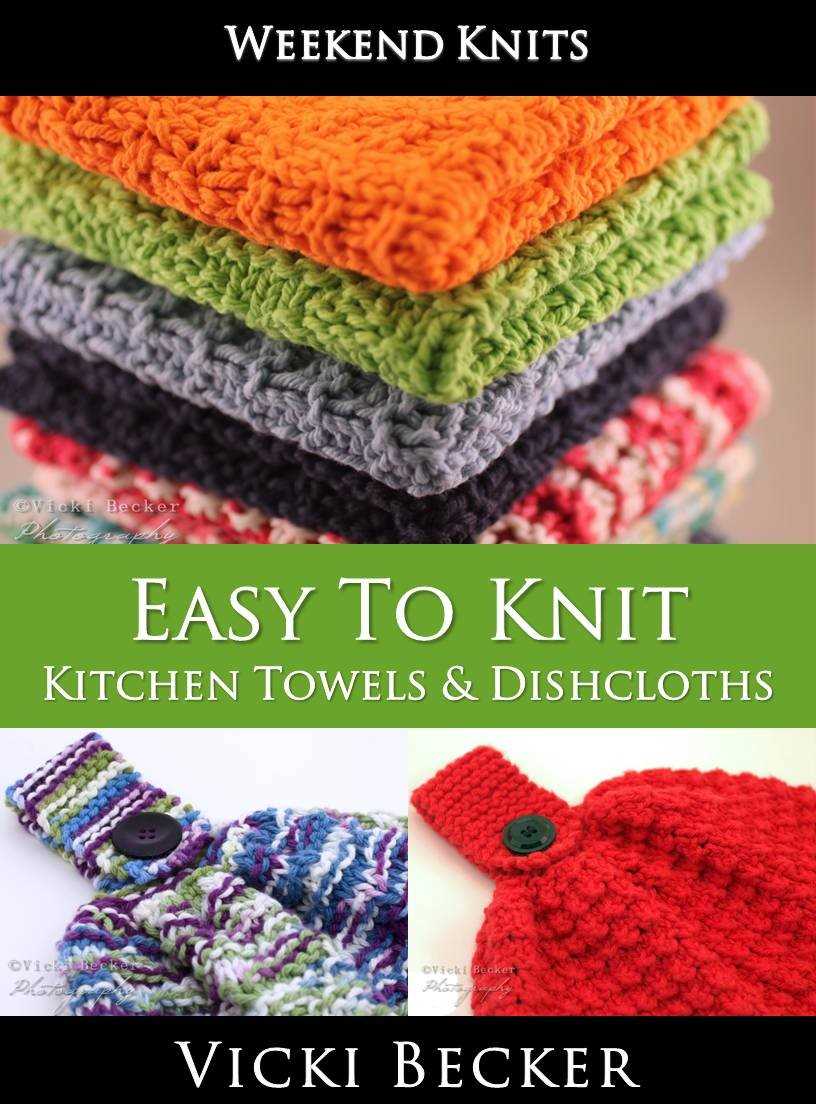
Once you have finished knitting your dishcloth, you will need to bind off to secure the stitches and create a neat edge. To bind off, knit the first two stitches, then use the left needle to lift the first stitch over the second stitch and off the right needle. Repeat this process for each stitch until you have one stitch remaining, then cut the yarn and pull it through the last stitch.
5. Weaving in ends
After binding off, you will have loose ends of yarn from the cast on and bind off edges. To prevent the dishcloth from unraveling, weave in these ends using a tapestry needle. Thread the yarn onto the needle and weave it through the stitches on the back of the fabric. Trim any excess yarn.
By mastering these basic knitting techniques, you’ll be able to create a variety of dishcloth patterns and add a personal touch to your kitchen. Remember to practice and have fun with your knitting projects!
Casting on stitches
When starting a knitting project, one of the first steps is to cast on stitches. This creates the foundation for the rest of the knitting and determines the width of the piece. There are several methods for casting on stitches, each with its own advantages and uses.
One common method is the long tail cast on. To do this, hold the yarn in your hand and make a slipknot, leaving a tail that is about three times the desired width of the piece. Slip this loop onto the knitting needle and tighten slightly. Then, use your other hand to insert the needle into the loop and wrap the working yarn around the needle in a counterclockwise direction. Pull this loop through the slipknot loop and onto the needle. Repeat this process until the desired number of stitches is cast on.
Another method is the knitted cast on. This is a simple and quick method, making it great for beginners. To do the knitted cast on, start with a slipknot on the needle. Insert the right-hand needle into the slipknot loop and wrap the working yarn around it, as if to knit. Pull this loop through the slipknot loop and onto the needle. This creates a new stitch. Continue this process until the desired number of stitches is cast on.
It’s important to ensure that the stitches are cast on evenly and not too tightly. A too-tight cast on can make the first row difficult to knit, while a too-loose cast on can result in a sloppy edge. Practice different casting on methods to see which one works best for you and gives you the desired outcome. Remember to refer to the knitting pattern for any specific cast on instructions, as some patterns may require a specific method.
Knit and purl stitches
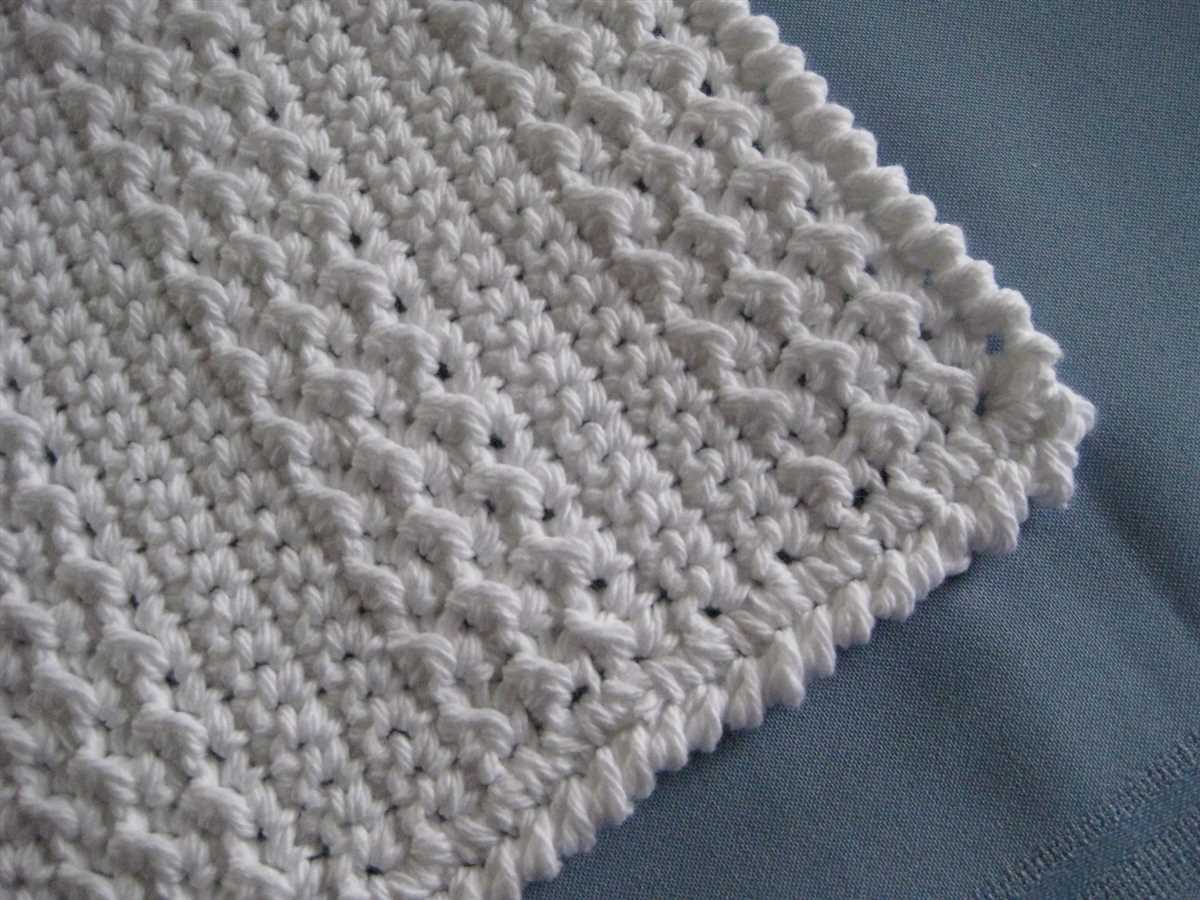
When it comes to knitting dishcloths, one of the most basic and essential techniques you’ll need to know is how to work knit and purl stitches. These two stitches create the foundation for countless knitting patterns and can be combined in various ways to create beautiful texture and pattern in your dishcloth designs.
The knit stitch is the most basic of all knitting stitches. It is created by inserting the right-hand needle into the front of the stitch on the left-hand needle, wrapping the yarn around the right-hand needle, and then pulling the yarn through the stitch to create a new loop. This loop is then transferred onto the right-hand needle, and the process is repeated across the row to create a series of interlocking loops.
The purl stitch is the reverse of the knit stitch and is used to create a different texture on the surface of the fabric. Instead of inserting the needle from the front of the stitch, you insert it from the back. You then wrap the yarn around the right-hand needle and pull it through the stitch to create a new loop. This loop is then transferred onto the right-hand needle, and the process is repeated across the row.
By combining knit and purl stitches in different patterns and sequences, you can create a wide variety of textures and patterns in your dishcloths. For example, a simple seed stitch pattern alternates between knit and purl stitches to create a bumpy texture. A rib stitch pattern, on the other hand, uses columns of knit and purl stitches to create a stretchy and textured fabric.
Learning how to work knit and purl stitches is essential for any knitting project, especially when it comes to knitting dishcloths. With these two simple stitches, you can create endless variations and designs, adding a personal touch to your kitchen essentials.
Increasing and Decreasing Stitches
When knitting dishcloths or any other project, it is important to understand how to increase and decrease stitches to create the desired shape and size. These techniques are used to add or remove stitches from the knitting, allowing for shaping and design elements.
Increasing stitches: To increase stitches, you can use different techniques depending on the desired outcome. One common method is the yarn over (yo) technique, which involves wrapping the working yarn around the needle before knitting the next stitch. This creates a new stitch and an eyelet. Another method is the make one (M1) technique, where you pick up the horizontal bar between two stitches and knit into it to create a new stitch.
Decreasing stitches: Decreasing stitches is crucial when shaping your project or creating intricate patterns. One common technique is the knit two stitches together (k2tog), where you insert the needle through the next two stitches and knit them together as one. This decreases one stitch. Another method is the slip-slip-knit (ssk), where you slip two stitches knitwise, insert the left needle through the front loops, and knit them together. This creates a left-leaning decrease.
Example Techniques:
- Yarn Over (YO): Wrap the yarn around the needle from front to back, creating a new stitch and an eyelet.
- Make One (M1): Insert the left needle into the horizontal bar between two stitches from front to back, then knit into it.
- Knit Two Stitches Together (K2TOG): Insert the right needle through the next two stitches from left to right, then knit them together as one.
- Slip-Slip-Knit (SSK): Slip two stitches knitwise from the left to the right needle, then insert the left needle through the front loops of the slipped stitches and knit them together.
These are just a few examples of increasing and decreasing techniques used in knitting dishcloths and other projects. Practice these techniques to enhance your knitting skills and create beautifully shaped and patterned items.
Knitting patterns for beginner dishcloths
Are you a beginner knitter looking for some simple and fun projects to practice your skills? Knitting dishcloths is a great way to refine your techniques while also creating something useful for your kitchen. With just a few basic stitches, you can make a variety of dishcloths that will add a touch of handmade charm to your home.
1. Garter Stitch Dishcloth: One of the easiest patterns for beginners is the garter stitch dishcloth. This pattern involves knitting every row, creating a textured fabric that is perfect for scrubbing dishes. You can experiment with different yarn colors to make a set of vibrant and cheerful dishcloths.
2. Seed Stitch Dishcloth: Another simple yet beautiful pattern for beginners is the seed stitch dishcloth. This pattern alternates between knit and purl stitches, creating a lovely textured design. You can use different colored yarns to make stripes or try variegated yarn for a unique look.
3. Diagonal Dishcloth: If you’re ready to take on a slightly more challenging pattern, give the diagonal dishcloth a try. This pattern involves simple increases and decreases to create a diagonal shape. It’s a great way to practice shaping and pattern reading while still keeping it relatively easy.
4. Basketweave Dishcloth: The basketweave stitch is a classic pattern that adds a touch of elegance to any dishcloth. With just knits and purls, you can create a textured fabric that resembles a woven basket. This pattern is perfect for beginners who want to try something a bit more intricate.
5. Moss Stitch Dishcloth: The moss stitch is a combination of knits and purls that creates a beautiful and textured fabric. This pattern is great for beginners who want to practice switching between knit and purl stitches. You can choose different colors to create a striped or ombré effect.
With these beginner-friendly dishcloth patterns, you’ll be able to practice your knitting skills while also creating practical and decorative items for your kitchen. So grab your needles and some cotton yarn, and start knitting your way to a more sustainable and cozy home!
Garter Stitch Pattern
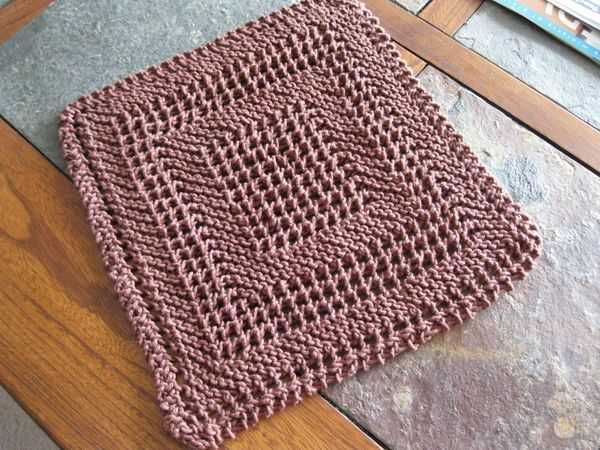
Garter stitch is one of the simplest and most popular knitting patterns. It is a pattern created by knitting every row, resulting in a fabric that has a ridged texture on both sides. This pattern is perfect for beginner knitters, as it only requires knowledge of the basic knit stitch.
To create a garter stitch pattern, simply cast on the desired number of stitches and knit every row. The result will be a fabric that is reversible, meaning it looks the same on both sides. This makes it great for items like dishcloths, as they can be used on either side.
Benefits of Using the Garter Stitch Pattern
- Texture: The ridged texture of garter stitch adds interest and dimension to your knitting project.
- Ease: Knitting every row is simple and repetitive, making it an ideal pattern for beginners or for mindless knitting while watching TV or commuting.
- Reversible: Garter stitch fabric looks the same on both sides, so you don’t have to worry about your project looking “wrong” if it flips over.
- Durability: The garter stitch pattern creates a sturdy fabric that is great for items like dishcloths, which need to withstand repeated use and washing.
Overall, the garter stitch pattern is a versatile and beginner-friendly choice for various knitting projects. Whether you’re making dishcloths, scarves, or blankets, this simple pattern will provide a beautiful, textured result.
Seed Stitch Pattern
The seed stitch pattern is a simple but elegant knitting stitch pattern that creates a textured fabric. It is often used for dishcloths because the bumps and ridges provide a gentle exfoliating effect. With its alternating knit and purl stitches, the seed stitch pattern is easy to memorize and can be a fun way to practice your knitting skills.
To create the seed stitch pattern, you will need to know how to knit and purl stitches. The pattern is worked over an odd number of stitches and is typically worked on straight needles, although it can also be adapted for circular knitting.
To start the seed stitch pattern, cast on an odd number of stitches. For example, you can cast on 39 stitches for a small dishcloth or increase the number of stitches for a larger project. Once your stitches are cast on, you will begin working the seed stitch pattern as follows:
- Row 1: *Knit 1, purl 1*. Repeat from * to * across the row.
- Row 2: *Purl 1, knit 1*. Repeat from * to * across the row.
- Repeat rows 1 and 2 until your project reaches the desired length.
When working the seed stitch pattern, be careful to maintain the proper stitch pattern on each row. It can be easy to get mixed up and accidentally knit a purl stitch or vice versa, which can alter the texture of the fabric. Taking the time to double-check your work as you go can help ensure that your seed stitch pattern turns out as intended.
The seed stitch pattern is a versatile stitch that can be used for more than just dishcloths. You can incorporate it into a variety of projects, such as scarves, hats, and blankets, to add texture and visual interest. Experiment with different yarn weights and colors to create unique and personalized pieces.
Stockinette Stitch Pattern
Stockinette stitch is one of the most popular and widely used knitting stitch patterns. It creates a smooth and flat fabric with a distinctive V-shaped pattern on one side and a horizontal row of bumps on the other side. The stockinette stitch pattern is commonly used for making garments, such as sweaters and socks, as it provides a clean and polished look.
To knit the stockinette stitch pattern, alternate between knitting one row and purling the next row. This creates the smooth and uniform texture of the fabric. It is important to note that the stockinette stitch tends to curl at the edges, so adding a border or blocking the finished piece can help prevent curling.
The stockinette stitch pattern is versatile and can be used in various knitting projects. It is also an excellent choice for beginners, as it only requires basic knitting skills. With a little practice, anyone can master the stockinette stitch and create beautiful and professional-looking knit items.
Summary:
The stockinette stitch pattern is a widely used knitting stitch pattern that creates a smooth and flat fabric with a V-shaped pattern on one side and bumps on the other side. It is commonly used for making garments and is suitable for beginners. With its versatility and polished look, the stockinette stitch pattern is a popular choice among knitters.